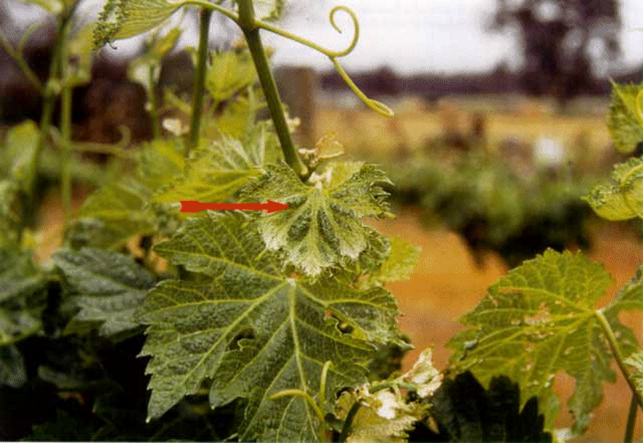Use of phenoxy herbicides in Western Australia
Use of phenoxy herbicides is restricted in Western Australia (WA) under the Aerial Spraying Control Act 1966 and the Agriculture and Related Resources Protection (Spraying Restrictions) Regulation 1979.
In WA, there are requirements for the spraying of phenoxy based herbicides around sensitive crops in the specific locations. Spraying of any volatile ester of phenoxy acid is totally banned within five kilometres of a commercially sensitive crop (that is a vineyard or tomato garden), within 19 kilometres of the Geraldton post office, within the Swan Valley, and within ten kilometres of the Kununurra post office.
Spraying of an approved low volatile ester or scheduled herbicide may occur between five to ten kilometres of a commercially sensitive crop (that is, vineyard or tomato garden), beyond 19 kilometres but within 50 kilometres radius of Geraldton post office and between ten and 50 kilometres of the Kununurra post office with the prior written approval for the Director General of the Department of Agriculture and Food, Western Australia.

There are additional restrictions with respect to sensitive sites such as vineyards and horticultural enterprises.
- Spraying restrictions only apply to scheduled herbicides (hormone sprays — phenoxys and pyridines)
- No ester formulations of scheduled herbicides are permitted for use within a five kilometre radius of a commercial vineyard and horticultural enterprises.
- Permits are only required for scheduled herbicides for use within five kilometres of a commercial vineyard and horticultural enterprises.
- No scheduled volatile esters are permitted for use within ten kilometres of a commercial vineyard and horticultural enterprises.
- There are no restrictions for any herbicide outside ten kilometres from a commercial vineyard and horticultural enterprises.
Within five kilometres of a commercial vineyard and horticultural enterprises: only amine and sodium and potassium salt formulations are approved for spraying under permit. Therefore the following scheduled herbicides including MCPA, MCPB, 2,4-D, 2,4-DB, Dicamba and Picloram are allowed to be used within five kilometres, so long as they are either amine, sodium, or potassium salt formulations.
Between five and ten kilometres of a commercial vineyard: amine and sodium and potassium salt and low volatile ester formulations can be used without a permit.
Outside of ten kilometres: all formulations can be used without restrictions.
| Distance from a commercial vineyard | Herbicides permitted | Spraying restrictions |
|---|---|---|
| Within five kilometre radius | Amine or sodium or potassium salt formulations of scheduled herbicides | Permit required. NO ester formulations of scheduled herbicides permitted. |
| Between five and ten kilometres | Amine or sodium or potassium salt or low volatile (LVE) formulations of scheduled herbicides | Permit not required NO volatile ester formulations of scheduled herbicides permitted |
| Outside ten kilometre radius | NO restrictions | — |
Duty of care
Care should be taken to minimise any off target spray drift when applying agricultural products.
Non-scheduled products such as glyphosate, paraquat, bromoxynil have the potential to cause damage if used without precautions.
ALWAYS read the product label.
Further detail is provided through the herbicide application legal aspects link.
Formulations
Scheduled herbicides may have several formulations including amine, low volatile ester (LVE) and volatile ester formulations
Low volatile ester formulation examples:
- Tigrex, ethyl hexyl ester
- MCPA LVE ethyl hexyl ester 500
- 2-4-D Ester 600LV ethyl hexyl ester
- Grazon DS butoxyethyl ester.
Volatile ester formulations: if a product contains a scheduled active ingredient as an ester formulation such as Estercide 800 ethyl ester it cannot be used inside a ten kilometre radius of a commercial vineyard.
How to tell low volatile ester from volatile ester off the product label
High volatile formulations
Products that describe the actives with butyl, isobutyl or ethyl esters are high volatile:
- Esteron 800 – ethyl ester
- Ken – Ester 800 isobutyl ester.
Low volatile formulations
Low volatile ester (LVE) or Low volatile (LV) products will also contain components with similar active names as the higher volatile products but will have names such as:
- Ethyl hexyl, butoxyethyl, iso octyl
- 2,4-D ester LV600: ethyl hexyl ester
- Garlon 600: butoxyethyl ester
- LV Estercide 600: iso octyl ester
- MCPA: ethyl hexyl ester.
Scheduled herbicides (hormone herbicides)
| Active ingredient | Commercial product (examples) containing scheduled active ingredient |
|---|---|
| MCPA | MCPA 500, Tigrex, Thistle Killem, Polo LVE |
| MCPB | Tropotox, MCPB 400 |
| 2,4-D | Amicide 500, Estercide 800, 2,4-Damine 625, Pyresta, Esteron LV |
| 2,4-DB | Buticide, Buttress |
| Dicamba | Dicamba 200, Dicamba 500 |
| Picloram | Tordon 75D, Grazon DS, Access |
Note: Triclopyr and clopyralid are hormone sprays but are not included in the regulations as they came into use after the regulations were gazetted. Duty of care applies to all products.
Bromoxynil, which is one of the actives in Jaguar, is an ester but is not a scheduled herbicide. Bromoxynil is not a phenoxy herbicide, therefore has a different mode of action. Therefore, there are no restrictions on Bromoxynil or products that contain bromoxynil such as Jaguar.

